Archaeology
-
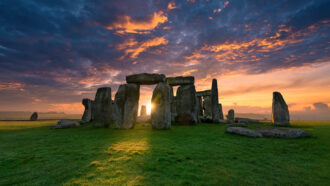 Archaeology
Archaeology50 years ago, Stonehenge’s purpose mystified scientists. It still does
In 1972, scientists thought Stonehenge may have been a calendar. Today, we still don’t know its purpose, but we have gained insight on its origin.
-
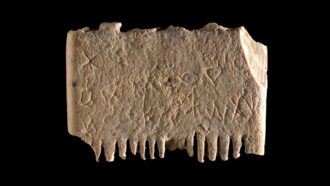 Humans
HumansThis ancient Canaanite comb is engraved with a plea against lice
The Canaanite comb bears the earliest known instance of a complete sentence written in a phonetic alphabet, researchers say.
By Freda Kreier -
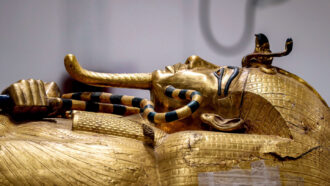 Archaeology
ArchaeologyKing Tut’s tomb still has secrets to reveal 100 years after its discovery
More of Tut’s story is poised to come to light in the coming years. Here are four things to know on the 100th anniversary of his tomb’s discovery.
By Bruce Bower -
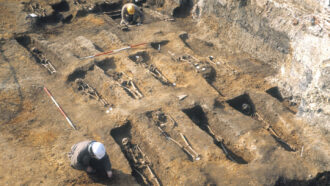 Genetics
GeneticsBlack Death immunity came at a cost to modern-day health
A genetic variant that boosts Crohn’s disease risk may have helped people survive the 14th century bubonic plague known as the Black Death.
By Wynne Parry -
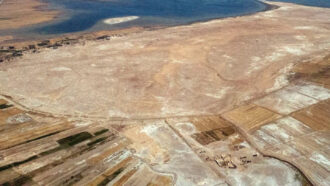 Archaeology
ArchaeologyDrone photos reveal an early Mesopotamian city made of marsh islands
Urban growth around 4,600 years ago, near what is now southern Iraq, occurred on marshy outposts that lacked a city center.
By Bruce Bower -
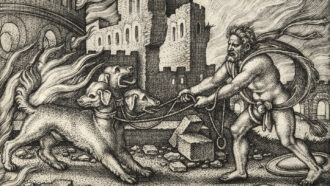 Anthropology
AnthropologyHow mythology could help demystify dog domestication
The path that dog myths took around the world closely parallels that of dog domestication, a new study finds.
-
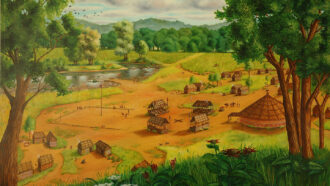 Archaeology
ArchaeologyIndigenous Americans ruled democratically long before the U.S. did
Oklahoma’s Muscogee people, among others, promoted rule by the people long before the U.S. Constitution was written.
By Bruce Bower -
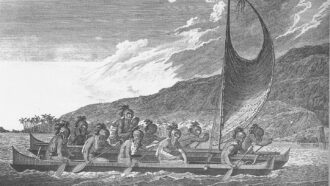 Anthropology
Anthropology‘The Five-Million-Year Odyssey’ reveals how migration shaped humankind
A globe-trotting trek through history shows how past population migrations changed the course of human biology and culture.
By Bruce Bower -
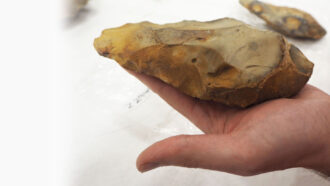 Archaeology
ArchaeologyBritons’ tools from 560,000 years ago have emerged from gravel pits
A new study confirms that an archaeological site in southeastern England called Fordwich is one of the oldest hominid sites in the country.
By Bruce Bower -
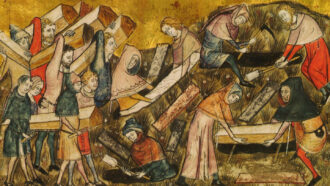 Archaeology
ArchaeologyAncient bacterial DNA hints Europe’s Black Death started in Central Asia
Archaeological and genetic data pin the origins of Europe’s 1346–1353 bubonic plague to a bacterial strain found in graves in Asia from the 1330s.
By Bruce Bower -
 Anthropology
AnthropologyA new origin story for domesticated chickens starts in rice fields 3,500 years ago
Chickens, popular on today’s menus, got their start in Southeast Asia surprisingly recently, probably as exotic or revered animals, researchers say.
By Bruce Bower -
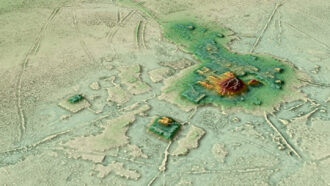 Archaeology
ArchaeologyLasers reveal ancient urban sprawl hidden in the Amazon
South America’s Casarabe culture built a network of large and small settlements in what’s now Bolivia centuries before the Spanish arrived.
By Bruce Bower